Weak links
- Tad Eareckson
- Posts: 9161
- Joined: 2010/11/25 03:48:55 UTC
Re: Weak links
I know. I was just speculating (CRAP! I'm not supposed to speculate! It's insensitive to the feelings of the friends and families of those who've been seriously and fatally inconvenienced.) that Ed might well have been less severely inconvenienced if he HAD been over the medium in which the boat was making headway and transmitting tow pressure for a short time.
(I remember talking to Bobby Fucking-Genius Bailey at Currituck during the Dragonfly promo tour (1991, first weekend in August). He was making the point that in the pre "center of mass" towing days there were a lot of humongous serious bruisings on water that would've most assuredly been fatalities on land.)
(I remember talking to Bobby Fucking-Genius Bailey at Currituck during the Dragonfly promo tour (1991, first weekend in August). He was making the point that in the pre "center of mass" towing days there were a lot of humongous serious bruisings on water that would've most assuredly been fatalities on land.)
- Tad Eareckson
- Posts: 9161
- Joined: 2010/11/25 03:48:55 UTC
Re: Weak links
Dr. Trisa Tilletti - 2011/11
HigherEDUCATION
THE ART AND ZEN OF LAUNCH CARTS
LISA: We all know that smart aerotow pilots use wheels to help prevent a nose-over in case of a weak link break, line break, or premature release--or if they are pushed into the ground or settle to the ground just after launch due to a premature launch, downdraft, tailwind, or hitting the prop blast when just coming off the cart.
Other, more unusual causes of hitting the ground in front of the cart include getting stuck to the cart for some reason, aborting the launch due to realizing that you missed something important in your preflight check (like not in a leg loop), a tug engine power loss, or abort of the launch for some other reason by the tug pilot. There is no good reason for an aerotow operator to use a cart design that doesn't accommodate a reasonably wide range of wheels and wheel brackets that can be used on hang gliders.
TRACY: Too low an angle of attack is also a problem, as a glider may not want to lift away from the cart and can feel as if it is sticking to it. It may result in a very high speed take-off, longer ground roll and more likelihood of hitting the prop wash, and/or premature launch--with the glider being pulled forward off the cart rather than lifting away from it. This is particularly bad if you have a small glider with a long keel, as the tail of the keel will get lifted by the cart keel support as the glider gets pulled forward, thus lifting the tail, reducing the AOA, and pushing the glider down into the ground in front of the cart. Combine this situation with no wheels and perhaps an open face helmet, and the result ain't pretty.
LISA: We continue to hear reports about this kind of thing happening at comps and tow operations.
TRACY: What's up with that? Why do you think it continues to happen?
LISA: Insufficient aerotow training, lack of knowledge and ground school training on use of carts, and lack of standardization of cart settings. How about giving some examples of which gliders go on which carts?
LISA: What about proper technique for launching off of a cart?
TRACY: In the earlier days of aerotowing, when most tugs had less power, acceleration, and climb rate than tugs use today, pilots were told to hang on to the cart until it was lifted a foot-or-two off the ground and then drop it, to assure that they had sufficient airspeed to fly and get clearance to climb away from the cart.
LISA: That approach still makes sense, if launching behind a very slow and very low-powered tug. But, most tugs now in service have much better performance. Also, a cart dropped from the air can bounce back up and hit or catch onto the pilot or glider, and the glider is likely to zoom up too high behind the tug, if it is flying fast when the cart is dropped.
TRACY: Right. So these days, the right time to let go of the hold down tubes and fly away from the cart is usually just prior to when the cart would be lifted off of the ground. It is not that difficult for a pilot to be able to feel when they are holding most (but not all) of the weight of the cart up by the handles, and know that it is time to release the handles to fly away from the cart.
LISA: Another issue is where your body should be positioned relative to the base tube while you are rolling on the cart. It usually works well to position the base tube about where it would be at best glide speed for your glider in free flight. That is close to being where the base tube will be while you are on tow, if your upper tow point is located in the correct position on your keel.
TRACY: However, there is no upper tow point when pro-towing, so there is nothing but your body weight to hold down the nose of your glider while launching and towing. In that case, you should hold your weight farther forward than at best glide speed when lying prone in the cart just prior to launch, because your body needs to be farther forward while towing. In fact, vertical lockouts are all too common with pro-towing, because sometimes pilots cannot move far enough forward to keep the nose down. A vertical lockout is very dangerous for both the tug pilot and the hang glider pilot.
LISA: Pilots should also realize that the cone of safety is much smaller when pro-towing than when using a normal 3-point aerotow bridle with an upper tow point, and that lockouts occur much quicker when pro-towing. For these reasons, we discourage pro-towing here at Cloud 9. It is a safety risk that some top comp pilots may wish to take for a miniscule amount of better high speed glide performance, but otherwise is a risk that just isn't worth taking for the vast majority of other pilots who aerotow.
TRACY: Another thing that we can talk about is crosswind cart launch technique. Pilots are required to get training on crosswind launch technique in order to get their AT rating. It's fairly simple. The pilot should just hold his/her weight an inch or two toward the upwind side of the wing while rolling on the cart, then center himself and fly the glider as necessary when leaving the cart. The more crosswind there is, the more the pilot should hold his weight over to the side while on the cart to keep the upwind wind down.
LISA: And then there is the issue of getting helped properly by a launch assistant.
TRACY: Right. Make sure the launch assistant is behind your side wires, and standing next to you--not behind you. It is difficult to communicate clearly with a launch assistant who is standing behind you, because you won't be able to see if he/she makes an incorrect or premature launch signal to the tug pilot if they are standing behind you. Therefore, ask your launch assistant to stand beside you, rather then behind you, before you give the "go, go, go" launch command.
LISA: Finally, we should mention the issue of stuff hanging out.
TRACY: Do you mean like a Tudor tube [ref 7]?
LISA: Not exactly, but if it is real long and hanging out, that would be a problem, too. What I'm talking about are things like VG cords, harness zipper cords, and anything else that dangles that could get stuck on the cart when launching.
TRACY: That includes feet. Some pilots launch with a foot hanging out of the harness, thinking that it will be quicker for them to get the other foot out and make a foot landing if their weak link breaks--or they are using their dangling leg to help bring their weight forward when pro-towing.
LISA: The smart approach is to not pro-tow, so you don't have to use a dangling leg to help keep your weight forward and the nose of your glider down. Also, you need to have wheels on your basetube, so you don't have to try to land on your feet if you have a weak link break close to the ground. Rather, with wheels on your basetube, you can keep your feet in your harness, while leaving your harness unzipped when you launch. That way you have the option of landing on wheels--if a weak link happens when you're very low--or you can do a foot landing, if higher. And you don't have to fumble around with trying to open your harness after the weak link breaks, because your harness leg doors are already open.
TRACY: Right. The problem with a dangling foot is that it is like a dangling harness or VG cord. A pilot's foot can get caught on the cart just like a dangling harness or VG cord. It happens; we've seen it.
LISA: And then the other problem is the Darwin Award approach of using launch carts--by lashing your glider to your cart to transport it across the field, then forgetting to undo the lash before launching. Just don't lash your glider to the cart. If it is so windy that you can't transport your glider across the field on the cart without lashing it to the cart, it's too windy to fly.
TRACY: A related, issue is mounting your instruments on to your glider when it is sitting on the cart and then lanyarding your instruments to both your glider and to the cart. That's another Darwin Award approach. That's not a Happy Ending.
LISA: Speaking of Happy Endings, it looks like we are done with this article. Since it's a bit windy for flying, you can take me on a date tonight and tow me up tomorrow.
TRACY: I'm up for that!!
REFERENCES
1. Zen and the Art of Motorcycle Maintenance, by Robert Pirsig, 1974. Harper Collins.
2. HIERTow pre-launch checklist. In "Higher Education: How to Get the USHPA Aerotow Rating." by Lisa Colletti and Tracy Tillman, Hang Gliding and Paragliding magazine, July 2011, p. 24.
http://issuu.com/us_hang_gliding_paragliding/docs/1101_web?mode=embed&viewMode=presentation&layout=http%3A%2F%2Fskin.issuu.com%2Fv%2Flight%2Flayout.xml&showFlipBtn=true
3. http://en.wikipedia.org/wiki/Zen
4. http://en.wikipedia.org/wiki/John_Dewey
5. "University Students Launch a New Product." by Tracy Tillman, Hang Gliding magazine, July 1997, pp. 34-37.
6. Lookout Mountain Flight Park Launch Cart information:
http://estore.hanglide.com/Aerotow_Tow_Dolly_p/14-9011.htm
7. A tool used for relief on record-breaking flights, per Larry Tudor, distance record holder.
- Tad Eareckson
- Posts: 9161
- Joined: 2010/11/25 03:48:55 UTC
Re: Weak links
Dr. Trisa Tilletti - 2011/11
HigherEDUCATION
THE ART AND ZEN OF LAUNCH CARTS
- Tell me how missing as many legloops as one feels like could be of the slightest consequence in dolly launched aerotow.
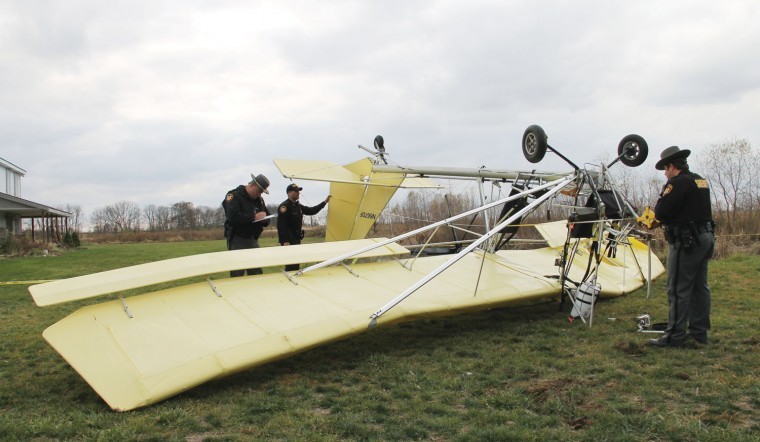

http://ozreport.com/forum/files/2_264.jpg
...but always an increase the safety of the towing operation at the cost of, at worst, a bit of inconvenience for the glider.
http://ozreport.com/forum/viewtopic.php?t=31052
Poll on weaklinks
24-13314
http://farm4.staticflickr.com/3944/15319209060_2c832f1f03_o.png

Oh My GOD!!!
http://ozreport.com/forum/viewtopic.php?t=27494
The exciting bits

Yep, some pretty ugly things can happen when you've got too many smart aerotow pilots all involved in an operation at one time. Hell, just look what happened to Robin Strid...

...behind Bobby Fucking-Genius Bailey at the 2005 Worlds.
HigherEDUCATION
THE ART AND ZEN OF LAUNCH CARTS
Smart aerotow pilots? Name some. Name four aerotow pilots who know the difference between a release and a weak link and the number of hands one needs to control a hang glider in an emergency situation.Dr. Trisa Tilletti 2: We all know that smart aerotow pilots...
All inconveniences which increase the safety of the towing operation....use wheels to help prevent a nose-over in case of a weak link break, line break, or premature release...
A "downdraft"? Can you show me a video of a glider getting pushed down three feet onto the runway by a downdraft?...or if they are pushed into the ground or settle to the ground just after launch due to a premature launch, downdraft...
Right. Hitting the prop blast when just coming off the cart is gonna PUSH the glider DOWN. What was it I was just saying about smart aerotow pilots?...tailwind, or hitting the prop blast when just coming off the cart.
Name some reasons for getting stuck to cart at a competent operation.Other, more unusual causes of hitting the ground in front of the cart include getting stuck to the cart for some reason...
- Right. Somebody's gonna abort a launch right as he comes off the cart 'cause that's the instant he's gonna REMEMBER that he missed a leg loop. Asshole....aborting the launch due to realizing that you missed something important in your preflight check (like not in a leg loop)...
- Tell me how missing as many legloops as one feels like could be of the slightest consequence in dolly launched aerotow.
Frequently a life threatening catastrophe for the tug......a tug engine power loss...


http://ozreport.com/forum/files/2_264.jpg
...but always an increase the safety of the towing operation at the cost of, at worst, a bit of inconvenience for the glider.
C'mon... You can't get any more creative than that?...or abort of the launch for some other reason by the tug pilot.
A good aerotow operator will use an optimal cart design which adjusts to all solo glider models and sizes - just like the single loop of 130 pound Greenspot he has everybody use...There is no good reason for an aerotow operator to use a cart design that doesn't accommodate a reasonably wide range of wheels and wheel brackets that can be used on hang gliders.
http://ozreport.com/forum/viewtopic.php?t=31052
Poll on weaklinks
...as the focal point of his safe towing system.Jim Rooney - 2013/03/04 19:31:36 UTC
I still won't tow people with doubled up weaklinks. You don't get to "make shit up". I don't "make shit up" for that matter either.
We all play by the same rules, or we don't play.
Morningside decided that they were happy with 200lb weaklink. They changed their tug's link and they don't just pass the stuff out either. If you'd like to know more about it... go ask them.
The law of the land at comps was 130lb greenspot or you don't tow. Seriously. It was announced before the comp that this would be the policy. Some guys went and made their case to the safety committee and were shut down. So yeah, sorry... suck it up.
A very high speed take-off? Mach 5 maybe? How much faster than the tug do you think he might be flying?Dr. Trisa Tilletti 1: Too low an angle of attack is also a problem, as a glider may not want to lift away from the cart and can feel as if it is sticking to it. It may result in a very high speed take-off...
Hitting the prop wash!...longer ground roll and more likelihood of hitting the prop wash...
24-13314
http://farm4.staticflickr.com/3944/15319209060_2c832f1f03_o.png

Oh My GOD!!!
http://ozreport.com/forum/viewtopic.php?t=27494
The exciting bits
That could rip the wings right off your glider. Take it from the most keenly intellectual smart aerotow pilot this sport has ever seen.Jim Rooney - 2012/05/28 11:49:58 UTC
Guys
Your questions hold the answers.
What you're writing about and what your seeing are two very different things.
Your theories are what are doing you in.
What you're talking about is coming out of the cart too early and not having enough flying speed.
What you're watching is Davis coming out of the cart at Mach5.
He is absolutely no where near coming out too slow!
I've said it before, I'll say it a million times... a 582 tug is NOT the same thing as a 914.
Using 582 techniques on a 914 will put you in the shit.
All this "hang onto the cart till it's flying" stuff is fine for 582s. It is NOT for 914s.
Why?
In a word... propwash.
I'm not kidding.
It amazes me how people underappreciate the propwash. It's an afterthough... a footnote.
Let me tell ya guys... on a 914, it's the #1 factor when you leave that damn cart.
You SLAM into that propwash.
I'm towing out here in the desert at the moment. Out here, like it or not, you get to see the propwash. You see it in a big way. Even when we're towing on the pavement, you get to see it. It sucks and you know exactly where it is... because it's a big old cloud of dust and rocks. We insist on our passengers wearing glasses because of it (we provide them if they don't have their own).
Crosswinds of course make a huge difference. But again, we see the propwash... it's clear as day. Sometimes we can even steer around it (that's an other topic though).
The reason I make such a big deal about the difference between the 582s and the 914s is because behind a 582, you're still on the ground when you hit the propwash. You're rolling on the cart and you roll right on through it. No big deal.
So when you "wait till you're lifting the cart"... you're WELL BEYOND the propwash.
When you exit at Mach5, it's no big deal.
Now, when you do this behind a 914... it's a huge deal.
As I said, you slam into the prop wash.
And you're wondering why you're breaking weaklinks????
Are you kidding me?
Think about it... you're going a million miles an hour under huge (relatively speaking) line tension as you come blazing out of the cart struggling to "stay down"... as you slam into turbulent air. Hell yes you're going to break weaklinks. That's what they're there for!
You're subjecting them to massive loadings.
(The shock loading a weaklink sees as you hit the propwash is far greater than people appreciate)
That's why we have them... they're doing their job.
Yeah sure, Trisa. That's actually happened before....and/or premature launch--with the glider being pulled forward off the cart rather than lifting away from it.
You mean like?:This is particularly bad if you have a small glider with a long keel, as the tail of the keel will get lifted by the cart keel support as the glider gets pulled forward, thus lifting the tail, reducing the AOA, and pushing the glider down into the ground in front of the cart. Combine this situation with no wheels and perhaps an open face helmet, and the result ain't pretty.

Yep, some pretty ugly things can happen when you've got too many smart aerotow pilots all involved in an operation at one time. Hell, just look what happened to Robin Strid...

...behind Bobby Fucking-Genius Bailey at the 2005 Worlds.
- Tad Eareckson
- Posts: 9161
- Joined: 2010/11/25 03:48:55 UTC
Re: Weak links
Dr. Trisa Tilletti - 2011/11
HigherEDUCATION
THE ART AND ZEN OF LAUNCH CARTS

http://ozreport.com/pub/images/fingerlakesaccident2.jpg
http://ozreport.com/pub/images/fingerlakesaccident3.jpg

So they can just abort the tow when they feel things aren't going quite right...
01-001
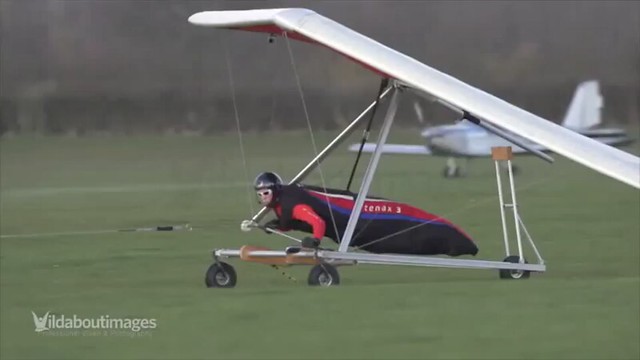
04-200
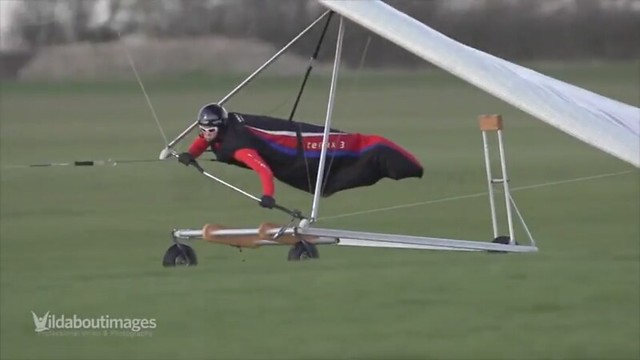
07-300
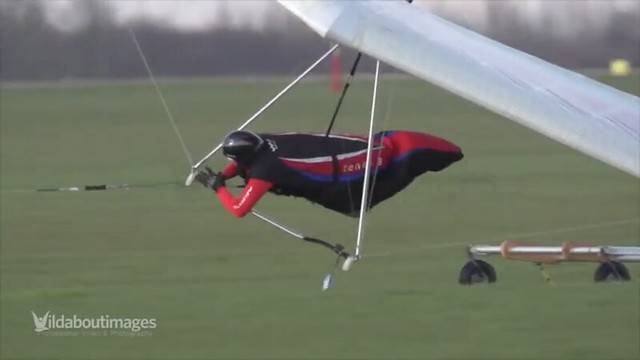
10-307
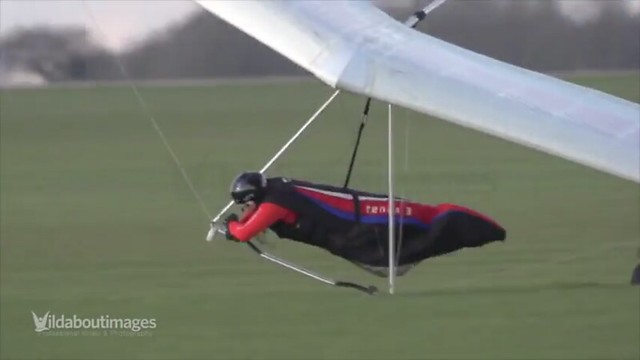
15-413
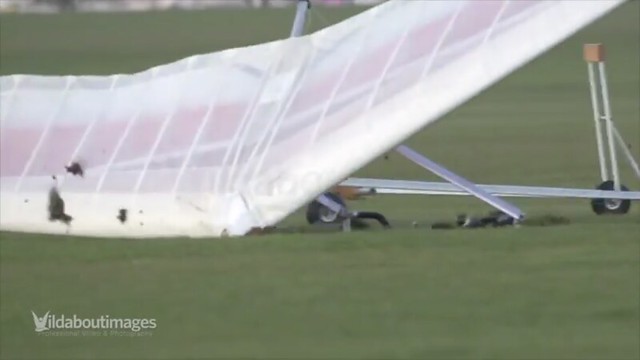
...and before they get into too much trouble.
- In the earlier days of aerotowing, when most tugs had less power, acceleration, and climb rate than tugs use today they also had higher stall / takeoff speeds. Ya had to stuff the fuckin' bar just to stay down level with them for the whole tow.
- Ya take off at the same speed regardless of how long it does or doesn't take the tug to reach it.
Pilots were told to hang on to the cart until it was lifted a foot-or-two off the ground and then drop it by the same assholes who are running this show to this day. And the actual smarter aerotow pilots quit doing that bullshit damned quick.
10-03610
http://farm3.staticflickr.com/2934/14379547800_3ebddd9d9b_o.png

has it?
06-03114
http://farm4.staticflickr.com/3728/9655895292_f4f808fb0e_o.png
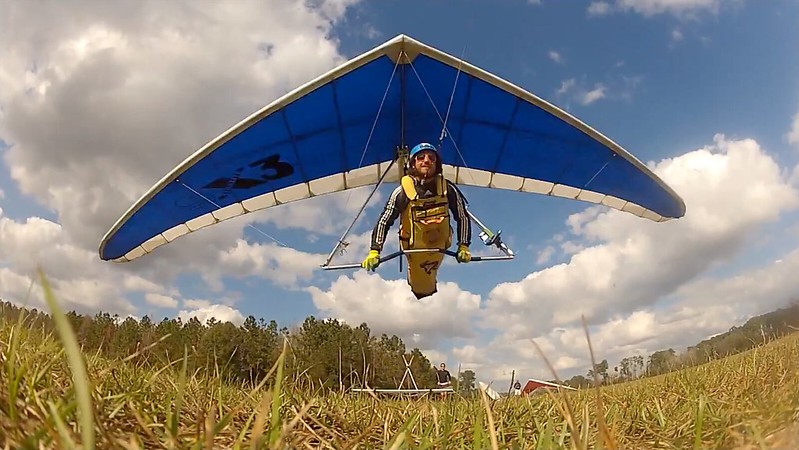
Zack Marzec here has it close to totally stuffed before the tug's even gotten airborne. You sure you know what you're talking about?
http://www.hanggliding.org/viewtopic.php?t=22233
Looking for pro-tow release
http://4.bp.blogspot.com/-bRrpHNa68iY/UQ6Pv9gRZyI/AAAAAAAAjTg/Hc22bx5122Q/s2048/20943781_BG1.jpg

The only thing that's really dangerous to a tug and a glider is a Tad-O-Link. Won't break for the glider in a lockout when it's supposed to and yanks the tug around by its tow mast breakaway protector really hard.
HigherEDUCATION
THE ART AND ZEN OF LAUNCH CARTS
Hey Trisa... Lighten up a bit. It's not like the sky is falling or anything. Besides... All these guys are using easily reachable Industry Standard releases...Dr. Trisa Tilletti 2: We continue to hear reports about this kind of thing happening at comps and tow operations.

http://ozreport.com/pub/images/fingerlakesaccident2.jpg
http://ozreport.com/pub/images/fingerlakesaccident3.jpg

So they can just abort the tow when they feel things aren't going quite right...
01-001

04-200

07-300

10-307

15-413

...and before they get into too much trouble.
Total fucking dickheads controlling the Towing Committee?Dr. Trisa Tilletti 1: What's up with that? Why do you think it continues to happen?
Yeah, that makes tons of sense.Dr. Trisa Tilletti 2: Insufficient aerotow training, lack of knowledge and ground school training on use of carts, and lack of standardization of cart settings. How about giving some examples of which gliders go on which carts?
Dr. Trisa Tilletti 2: What about proper technique for launching off of a cart?
Dr. Trisa Tilletti 1: In the earlier days of aerotowing, when most tugs had less power, acceleration, and climb rate than tugs use today, pilots were told to hang on to the cart until it was lifted a foot-or-two off the ground and then drop it, to assure that they had sufficient airspeed to fly and get clearance to climb away from the cart.
- In the earlier days of aerotowing, when most tugs had less power, acceleration, and climb rate than tugs use today they also had higher stall / takeoff speeds. Ya had to stuff the fuckin' bar just to stay down level with them for the whole tow.
- Ya take off at the same speed regardless of how long it does or doesn't take the tug to reach it.
Pilots were told to hang on to the cart until it was lifted a foot-or-two off the ground and then drop it by the same assholes who are running this show to this day. And the actual smarter aerotow pilots quit doing that bullshit damned quick.
If the standard aerotow weak link made sense to aerotow pilots for two decades ANYTHING will make sense.Dr. Trisa Tilletti 2: That approach still makes sense...
There ARE NO very slow tugs, idiot. Slow accelerating and climbing? Yes? Slow flying? No. That's why the Dragonfly was such an important development in the sordid history of aerotowing. It was designed to be able to slow down to comfortable hang glider speeds....if launching behind a very slow and very low-powered tug.
Unless you need something capable of flying in compliance with FAA aerotowing regulations and pulling a glider out of potentially lethal trouble.But, most tugs now in service have much better performance.
Good.Also, a cart dropped from the air can bounce back up and hit or catch onto the pilot or glider...
Tough shit....and the glider is likely to zoom up too high behind the tug, if it is flying fast when the cart is dropped.
When has she ever been wrong about anything, Dr. Trisa Tilletti 1?Dr. Trisa Tilletti 1: Right.
Unless your safety inconveniencer picks that moment to increase the safety of the towing operation.So these days, the right time to let go of the hold down tubes and fly away from the cart is usually just prior to when the cart would be lifted off of the ground.
"They"? So we're assuming a tandem thrill ride driver here?It is not that difficult for a pilot to be able to feel when they...
Fuck that. You start easing the glider off the cart when you sense you have crisp airspeed....are holding most (but not all) of the weight of the cart up by the handles, and know that it is time to release the handles to fly away from the cart.
Really? It shouldn't be positioned way the fuck back under your belly? The way this tandem aerotow instructor:Dr. Trisa Tilletti 2: Another issue is where your body should be positioned relative to the base tube while you are rolling on the cart. It usually works well to position the base tube about where it would be at best glide speed for your glider in free flight.
10-03610
http://farm3.staticflickr.com/2934/14379547800_3ebddd9d9b_o.png

has it?
Really?That is close to being where the base tube will be while you are on tow...
06-03114
http://farm4.staticflickr.com/3728/9655895292_f4f808fb0e_o.png

Zack Marzec here has it close to totally stuffed before the tug's even gotten airborne. You sure you know what you're talking about?
OH!!! *IF* your upper tow point is located in the correct position on your keel! Got it. So what happens if you don't have a tow point anywhere on or even anywhere NEAR your keel? Is there some kind of downside associated with that configuration?...if your upper tow point is located in the correct position on your keel.
Well if it's just pros doing it then it's OK, right? They're pros so they've developed the skill to do this safely and properly, right?Dr. Trisa Tilletti 1: However, there is no upper tow point when pro-towing, so there is nothing but your body weight to hold down the nose of your glider while launching and towing.
Yeah, like I said... Pros understand how to do this safely and properly. It's just us muppets who need to be flying in girl/faggot configuration.In that case, you should hold your weight farther forward than at best glide speed when lying prone in the cart just prior to launch, because your body needs to be farther forward while towing.
Oh bullshit...In fact, vertical lockouts are all too common with pro-towing, because sometimes pilots cannot move far enough forward to keep the nose down.
http://www.hanggliding.org/viewtopic.php?t=22233
Looking for pro-tow release
This is Davis Dead-On Straub we're talking to and he's been at an around all this plenty long enough to understand what's what and who's who.Davis Straub - 2011/06/16 05:11:44 UTC
Incorrect understanding.
Why? What's the worst that could happen? Tug's going up, glider's going up, nobody ever got scratched crashing into the sky, right?A vertical lockout is very dangerous for both the tug pilot and the hang glider pilot.
http://4.bp.blogspot.com/-bRrpHNa68iY/UQ6Pv9gRZyI/AAAAAAAAjTg/Hc22bx5122Q/s2048/20943781_BG1.jpg

The only thing that's really dangerous to a tug and a glider is a Tad-O-Link. Won't break for the glider in a lockout when it's supposed to and yanks the tug around by its tow mast breakaway protector really hard.
- Tad Eareckson
- Posts: 9161
- Joined: 2010/11/25 03:48:55 UTC
Re: Weak links
Dr. Trisa Tilletti - 2011/11
HigherEDUCATION
THE ART AND ZEN OF LAUNCH CARTS
- in the Cone of Safety so lockouts can't occur AT ALL
- a pro so it's no problem staying inside the much smaller Cone of Safety
How many times do I hafta explain this stuff to you dickheads?
http://ozreport.com/forum/viewtopic.php?t=24534
It's a wrap
http://2.bp.blogspot.com/-9Ek9_lFeSII/UZ4KuB0MUSI/AAAAAAAAGyU/eWfhGo4QeqY/s1024/GOPR5278.JPG
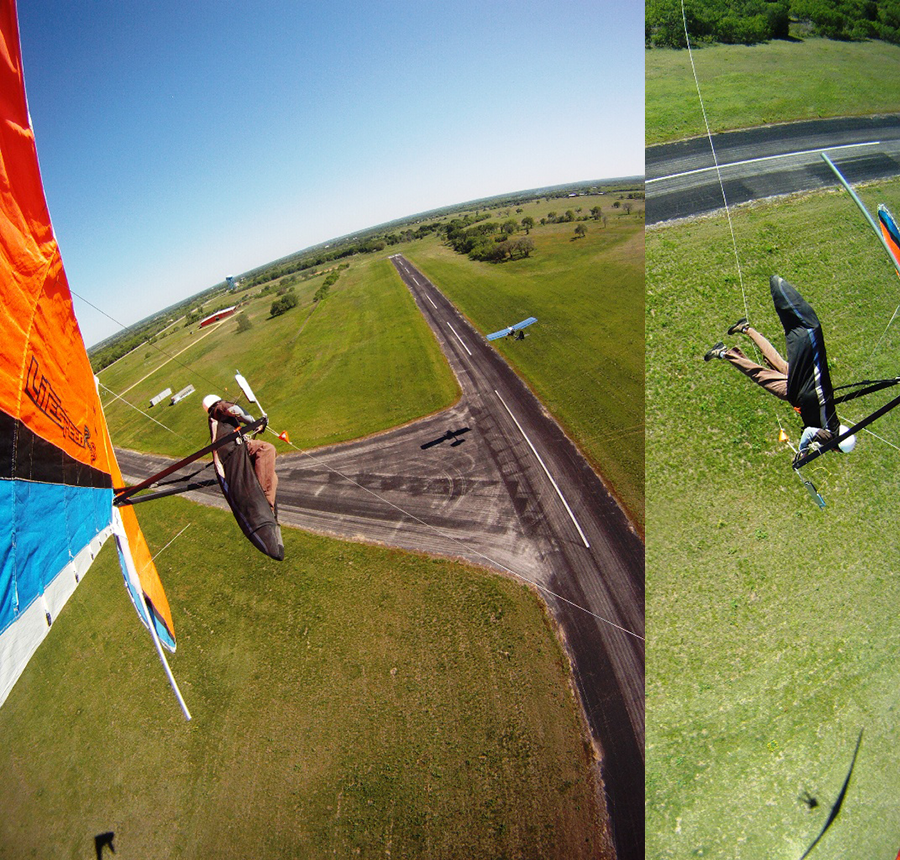
http://2.bp.blogspot.com/-Xh_NfnOcUns/UZ4Lm0HvXnI/AAAAAAAAGyk/0PlgrHfc__M/s1024/GOPR5279.JPG
...a pro toad bridle. You've got your Cone of Safety, an easily reachable Industry Standard release, a standard aerotow weak link with a huge track record for which you have an expectation of it breaking as early as possible in lockout situations but being strong and reliable enough to avoid frequent breaks from turbulence, AND a tug pilot who can fix whatever's going on back there by giving you the rope. What could POSSIBLY go wrong? I only wish I had a fraction of the safety margin and layers of redundancy lying on the couch watching sitcoms.
- How many launch assistants do we have out there who...
01-00525
http://c1.staticflickr.com/3/2920/14323504019_67d6c7ce19_o.png
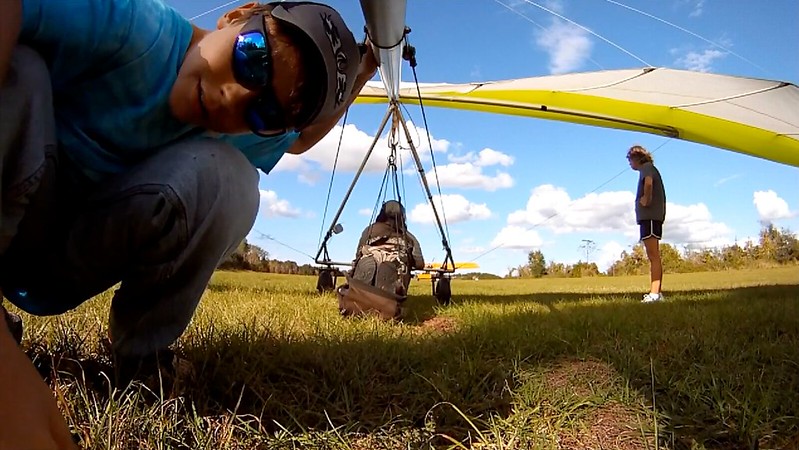
...have that much trouble remembering how to do their fuckin' jobs?
11-05129
http://c2.staticflickr.com/4/3903/14506703831_a986a7311a_o.png
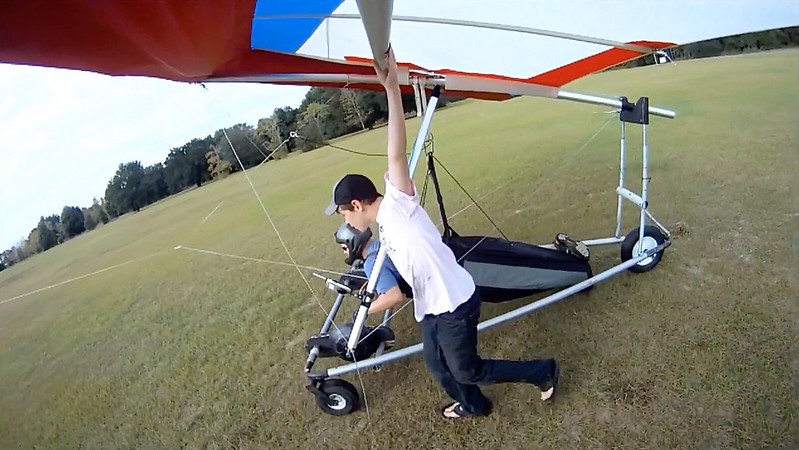
- How much bearing on the safety of an aerotow launch could a fuckin' cart monkey have anyway? Doesn't each of us agree (via the waiver) that...
http://www.hanggliding.org/viewtopic.php?t=32681
Tandem crash in LV (speculation thread)
How can anyone other than the person on the cart and under his glider with an appropriate weak link with a finished length of 1.5 inches or less possibly have the slightest influence on the safety of one of these tows?
- Give me three or four reasons why anybody needs to do a foot landing for an aborted aerotow launch. Don't they land on the same runways that the tugs do and don't all tugs do reasonably well most of the time rolling it in on the wheels? Or do they need to practice foot landings once in a while so's they can put it down in a narrow dry riverbed with large rocks strewn all over the place should the need arise?
37-23223
http://farm4.staticflickr.com/3713/9655904048_89cce6423a_o.png
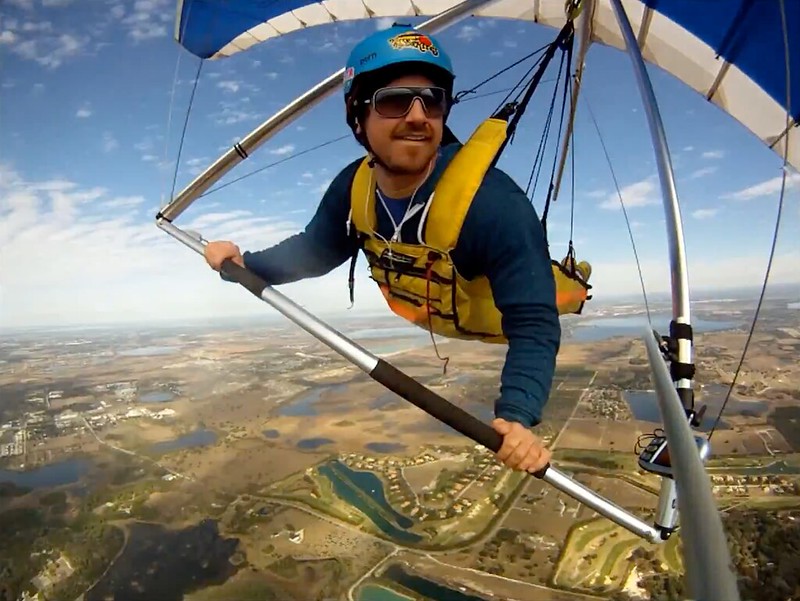
...don't need wheels when their safety devices aren't quite strong and reliable enough to avoid frequent breaks from turbulence.
- And if your weak link breaks you also don't hafta fumble around trying to blow your easily reachable Industry Standard release. See just how much your appropriate weak link with a finished length of 1.5 inches or less increases the safety of the towing operation!
http://www.youtube.com/watch?v=QLuYBZMT0GE
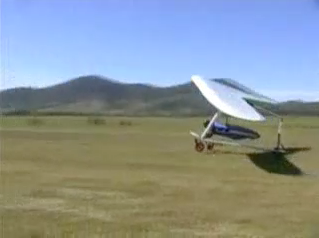
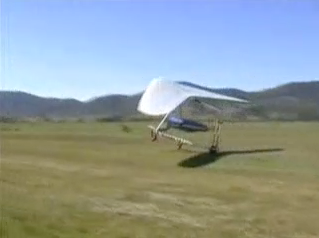
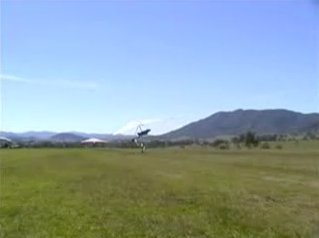
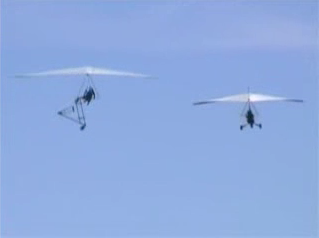
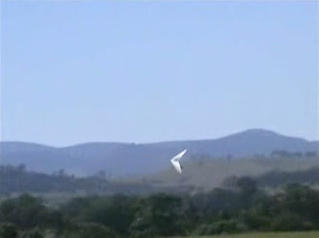
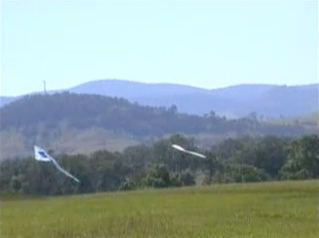
And notice how conspicuously absent references to release hardware are in this bullshit series of AT articles. Obviously because no release - Industry Standard or even homemade muppet stuff - has ever been an issue in a glider crash as a consequence of its inaccessibility, pathetic load capacity, general shoddiness.
http://www.hanggliding.org/viewtopic.php?t=22540
LMFP release dysfunction
Not a whole lot about the bearing of the competence and performance of the tug driver either. Not likely to see a profile of Jim Keen-Intellect Rooney or Bobby Fucking-Genius Bailey in one of these articles anytime soon either.
HigherEDUCATION
THE ART AND ZEN OF LAUNCH CARTS
So? How much trouble can it be to stay inside a much smaller Cone of Safety? And when you're in it nothing bad can happen to you - like getting kicked out of the Cone of Safety. Why the fuck do you think they call it the Cone of Safety?Dr. Trisa Tilletti 2: Pilots should also realize that the cone of safety is much smaller when pro-towing...
Stupid bitch....than when using a normal 3-point aerotow bridle...
Good thing ya got an upper tow point with a three point bridle. Ya start running out places to connect to when ya get much beyond a three-point....with an upper tow point...
BULLSHIT. You're:...and that lockouts occur much quicker when pro-towing.
- in the Cone of Safety so lockouts can't occur AT ALL
- a pro so it's no problem staying inside the much smaller Cone of Safety
How many times do I hafta explain this stuff to you dickheads?
Think any other AT operations should discourage it? Quest maybe?For these reasons, we discourage pro-towing here at Cloud 9.
http://ozreport.com/forum/viewtopic.php?t=24534
It's a wrap
If they've been involved in perfecting aerotowing for well over twenty years now and have never had anybody scratched as a consequence of pro towing just how dangerous could it possibly be? How 'bout we go after Tad-O-Links instead? Scores of people have been killed instantly from just thinking about them in the setup area.Paul Tjaden - 2011/07/30 15:33:54 UTC
Quest Air has been involved in perfecting aerotowing for nearly 20 years.
Oh. Eight feet of cable velcroed to the frame in and mostly perpendicular to the airflow only exacts a miniscule, probably undetectable, drag penalty - and just at high speed. You should head down to Zapata sometime and explain that to all those totally clueless comp pilots and world record setters. (Neither of you dickheads has ever designed any thing that's actually gone up on a glider, have you?)It is a safety risk that some top comp pilots may wish to take for a miniscule amount of better high speed glide performance...
Bullshit. Cite ONE consequential incident in which anybody's ever suffered so much as a slightly bowed downtube as a consequence of flying......but otherwise is a risk that just isn't worth taking for the vast majority of other pilots who aerotow.
http://2.bp.blogspot.com/-9Ek9_lFeSII/UZ4KuB0MUSI/AAAAAAAAGyU/eWfhGo4QeqY/s1024/GOPR5278.JPG

http://2.bp.blogspot.com/-Xh_NfnOcUns/UZ4Lm0HvXnI/AAAAAAAAGyk/0PlgrHfc__M/s1024/GOPR5279.JPG
...a pro toad bridle. You've got your Cone of Safety, an easily reachable Industry Standard release, a standard aerotow weak link with a huge track record for which you have an expectation of it breaking as early as possible in lockout situations but being strong and reliable enough to avoid frequent breaks from turbulence, AND a tug pilot who can fix whatever's going on back there by giving you the rope. What could POSSIBLY go wrong? I only wish I had a fraction of the safety margin and layers of redundancy lying on the couch watching sitcoms.
Do they lose it if they fuck up? I notice John Claytor:Dr. Trisa Tilletti 1: Another thing that we can talk about is crosswind cart launch technique. Pilots are required to get training on crosswind launch technique in order to get their AT rating.
still has his - but maybe they just let him keep it 'cause they knew his neck was so badly mangled that he'd never be able to fly again anyway.John Claytor - Virginia - 67393 - H4 - 2007/01/08 - Steve Wendt - AT FL PL ST RLF TUR XC - Exp: 2015/04/30
Good. I like that. Complexity just makes things more dangerous and aerotowing is way too complex as it is. I keep trying to talk people out of using launch carts but they never seem to be able to get it. Guess I've gotta be happy with all the people I've gotten to simplify to pro toad bridles and eliminate weak link protection on backup releases.It's fairly simple.
What if it's a her?The pilot should just hold his/her weight an inch or two toward the upwind side of the wing while rolling on the cart, then center himself...
How many hands does he/she normally use to hold his/her weight toward the upwind side?...and fly the glider as necessary when leaving the cart. The more crosswind there is, the more the pilot should hold his weight over to the side while on the cart to keep the upwind wind down.
One of those guys who makes sure that you're not using an inappropriate weak link and/or a straight pin release?Dr. Trisa Tilletti 2: And then there is the issue of getting helped properly by a launch assistant.
And then you'd be committed to launch because your easily reachable release is only easily reachable during a low level lockout.Dr. Trisa Tilletti 1: Right. Make sure the launch assistant is behind your side wires, and standing next to you--not behind you. It is difficult to communicate clearly with a launch assistant who is standing behind you, because you won't be able to see if he/she makes an incorrect or premature launch signal to the tug pilot if they are standing behind you.
- Then the tuggie floors it and you're on your way?Therefore, ask your launch assistant to stand beside you, rather then behind you, before you give the "go, go, go" launch command.
- How many launch assistants do we have out there who...
01-00525
http://c1.staticflickr.com/3/2920/14323504019_67d6c7ce19_o.png

...have that much trouble remembering how to do their fuckin' jobs?
11-05129
http://c2.staticflickr.com/4/3903/14506703831_a986a7311a_o.png

- How much bearing on the safety of an aerotow launch could a fuckin' cart monkey have anyway? Doesn't each of us agree (via the waiver) that...
http://www.hanggliding.org/viewtopic.php?t=32681
Tandem crash in LV (speculation thread)
...we understand we're engaged in a risky sport that can cause serious injury or death, we are personally and individually responsible for our own safety, if we have an accident and get hurt that that it is solely our own fault, no matter what the circumstances might be. Aren't these the most fundamental tenets of our sport, that we are all individually responsible for ourselves and our safety, that if someone doesn't agree with these principles then he doesn't need to be involved in our sport?Mark G. Forbes - 2015/04/01 03:46:29 UTC
Among ourselves, we agree (via the waiver) that we understand we're engaged in a risky sport that can cause serious injury or death. We each agree that we are personally and individually responsible for our own safety. If we have an accident and get hurt, we agree in advance that it is solely our own fault, no matter what the circumstances might be. We sign at the bottom saying that we fully understand these things, that we accept them, and that we know we are giving up the right to sue anybody if an accident happens.
Those are fundamental tenets of our sport. We are all individually responsible for ourselves and our safety. We need to see and avoid all other pilots, avoid crashing into people or property and use good judgment when flying. If someone doesn't agree with those principles, then they don't need to be involved in our sport.
How can anyone other than the person on the cart and under his glider with an appropriate weak link with a finished length of 1.5 inches or less possibly have the slightest influence on the safety of one of these tows?
Your astronomical stupidity is showing.Dr. Trisa Tilletti 2: Finally, we should mention the issue of stuff hanging out.
Duh.What I'm talking about are things like VG cords, harness zipper cords, and anything else that dangles that could get stuck on the cart when launching.
- Don't they have an expectation of breaking as early as possible in lockout situations but being strong and reliable enough to avoid frequent breaks from turbulence?Dr. Trisa Tilletti 1: That includes feet. Some pilots launch with a foot hanging out of the harness, thinking that it will be quicker for them to get the other foot out and make a foot landing if their weak link breaks...
- Give me three or four reasons why anybody needs to do a foot landing for an aborted aerotow launch. Don't they land on the same runways that the tugs do and don't all tugs do reasonably well most of the time rolling it in on the wheels? Or do they need to practice foot landings once in a while so's they can put it down in a narrow dry riverbed with large rocks strewn all over the place should the need arise?
Don't the pros know what they're doing well enough to not need your recommendations?...or they are using their dangling leg to help bring their weight forward when pro-towing.
How 'bout so's you don't go into a vertical lockout when you hit a monster thermal, have the safety of the aerotow operation increased by a standard aerotow weak link very clearly protect you from a high angle attack, and tumble back into the runway after a whip inconvenience?Dr. Trisa Tilletti 2: The smart approach is to not pro-tow, so you don't have to use a dangling leg to help keep your weight forward and the nose of your glider down.
Pro toads...Also, you need to have wheels on your basetube, so you don't have to try to land on your feet if you have a weak link break close to the ground.
37-23223
http://farm4.staticflickr.com/3713/9655904048_89cce6423a_o.png

...don't need wheels when their safety devices aren't quite strong and reliable enough to avoid frequent breaks from turbulence.
- Yep, Dr. Trisa Tilletti 2... Ya just can't have too many safety devices and procedures on deck to compensate for the focal point of your safe towing system increasing the safety of the towing operation. Any thoughts on ballistic parachutes.Rather, with wheels on your basetube, you can keep your feet in your harness, while leaving your harness unzipped when you launch. That way you have the option of landing on wheels--if a weak link happens when you're very low--or you can do a foot landing, if higher. And you don't have to fumble around with trying to open your harness after the weak link breaks, because your harness leg doors are already open.
- And if your weak link breaks you also don't hafta fumble around trying to blow your easily reachable Industry Standard release. See just how much your appropriate weak link with a finished length of 1.5 inches or less increases the safety of the towing operation!
What if everybody used one and a half to two G weak links and launched with their pods zipped? Would you be seeing more or less carnage?Dr. Trisa Tilletti 1: Right. The problem with a dangling foot is that it is like a dangling harness or VG cord. A pilot's foot can get caught on the cart just like a dangling harness or VG cord. It happens; we've seen it.
And your cart monkeys aren't quite sharp enough to catch that issue before the cart leaves the field with the glider?Dr. Trisa Tilletti 2: And then the other problem is the Darwin Award approach of using launch carts--by lashing your glider to your cart to transport it across the field, then forgetting to undo the lash before launching.
Unless it's a ninety cross at the ECC and Davis's Safety Committee is waiting for somebody to have a career ending lockout neck injury to call the task.Just don't lash your glider to the cart. If it is so windy that you can't transport your glider across the field on the cart without lashing it to the cart, it's too windy to fly.
Not if you've got a good tug pilot like Corey Burk alert and ready to fix whatever's going on back there by giving you the rope. Then it's just an inconvenience you gotta cope with.Dr. Trisa Tilletti 1: A related, issue is mounting your instruments on to your glider when it is sitting on the cart and then lanyarding your instruments to both your glider and to the cart. That's another Darwin Award approach.
Yeah?That's not a Happy Ending.
http://www.youtube.com/watch?v=QLuYBZMT0GE






Dr. Trisa Tilletti 2: Speaking of Happy Endings, it looks like we are done with this article. Since it's a bit windy for flying, you can take me on a date tonight and tow me up tomorrow.
I so do love it when total morons in positions of power put stuff in print such that it's impossible to edit, delete, deny. Major smoking gun article - and these sleazy motherfuckers totally know it.Dr. Trisa Tilletti 1: I'm up for that!!
And notice how conspicuously absent references to release hardware are in this bullshit series of AT articles. Obviously because no release - Industry Standard or even homemade muppet stuff - has ever been an issue in a glider crash as a consequence of its inaccessibility, pathetic load capacity, general shoddiness.
http://www.hanggliding.org/viewtopic.php?t=22540
LMFP release dysfunction
Totally innocent oversight?Diev Hart - 2011/07/14 17:19:12 UTC
I have had issues with them releasing under load. So I don't try to release it under a lot of load now.
Not a whole lot about the bearing of the competence and performance of the tug driver either. Not likely to see a profile of Jim Keen-Intellect Rooney or Bobby Fucking-Genius Bailey in one of these articles anytime soon either.
- Tad Eareckson
- Posts: 9161
- Joined: 2010/11/25 03:48:55 UTC
Re: Weak links
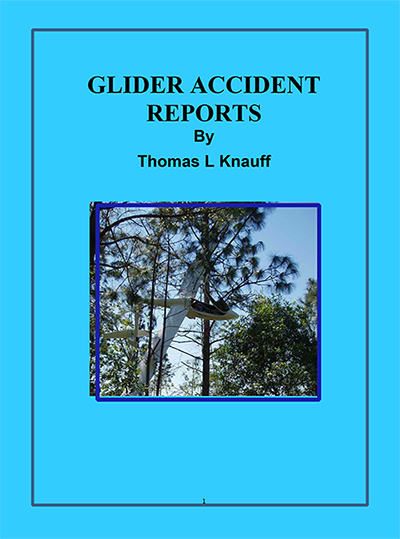
http://www.eglider.org/NewsArticles/launchingemergencies.htm
Launching Emergencies
http://www.chgpa.org/forums/viewtopic.php?f=2&t=2467Thomas L. Knauff
Focusing on Launching Emergencies
Focusing on launching emergencies can have the desirable side effect of reducing accidents in landings as well as other high-risk areas of glider flying. Creating a safe mental attitude, getting others involved in safety of flight environment, and educating pilots, flight crews, and even bystanders can have a profound effect on flight safety.
Launching has easily identifiable risks. Injuries should rarely occur and deaths are absolutely avoidable.
Pilots should expect things to go wrong and have a plan of action when things go wrong.
The odds are 50/50 of something bad happening on each launch. Either it will or it won't!
With this attitude, a pilot would be alert to something happening, and execute the plan of action immediately.
What can go wrong?
A group of experienced pilots was asked this question and most wrote down 8 to 10 possibilities. Most pilots will probably think of a similar number. Here is a list we thought of:
TAKEOFF EMERGENCIES
1. Rope Break.
weak links
http://4.bp.blogspot.com/-bRrpHNa68iY/UQ6Pv9gRZyI/AAAAAAAAjTg/Hc22bx5122Q/s2048/20943781_BG1.jpgJim Rooney - 2007/08/01
Whatever's going on back there, I can fix it by giving you the rope.
It's more of this crappy argument that being on tow is somehow safer than being off tow.

- Tad Eareckson
- Posts: 9161
- Joined: 2010/11/25 03:48:55 UTC
Re: Weak links
Third anniversary of Quest's safety device induced inconvenience fatality.
Once again none of Zack Marzec's dearest friends from the hang gliding "community" are posting any fond remembrances on the Jack or Davis Shows. Currently on the former he's a 139 post dead thread on Page 27 and on the latter he's several locked threads on Page 73.
http://www.hanggliding.org/viewtopic.php?t=12403
weak link table
http://ozreport.com/forum/viewtopic.php?t=24846
Is this a joke ?
https://ushpa.aero/member_file.asp?id=587
USHPA - Members Only File Download
And nobody will ever again say anything about 130 pound Greenspot either.
Once again none of Zack Marzec's dearest friends from the hang gliding "community" are posting any fond remembrances on the Jack or Davis Shows. Currently on the former he's a 139 post dead thread on Page 27 and on the latter he's several locked threads on Page 73.
http://www.hanggliding.org/viewtopic.php?t=12403
weak link table
Closing on seven years now and...Tad Eareckson - 2009/06/09 17:30:31 UTC
On the off chance that hang gliding will EVER figure out what a weak link is...
http://ozreport.com/forum/viewtopic.php?t=24846
Is this a joke ?
Nope. It's a piece of some flavor of fishing line that somebody's happy with that goes on a bridal end. Nobody knows what it blows at, what it's supposed to do, how it was worked out, what its track record is.Bart Weghorst - 2011/08/28 20:29:27 UTC
Now I don't give a shit about breaking strength anymore. I really don't care what the numbers are. I just want my weaklink to break every once in a while.
https://ushpa.aero/member_file.asp?id=587
USHPA - Members Only File Download
Jean_Dry_Lakebed_Accident_Report_and_Analysis.pdf - 2015/05/11
A typical two loop / four strand weak link for tandem surface tow operations was properly installed and positioned between the tow bridle and the tow line.
And nobody will ever again say anything about 130 pound Greenspot either.
-
Steve Davy
- Posts: 1338
- Joined: 2011/07/18 10:37:38 UTC
Re: Weak links
I'm guessing that the 20:00:00 entry is by design.
How did you do that?
How did you do that?
- Tad Eareckson
- Posts: 9161
- Joined: 2010/11/25 03:48:55 UTC
Re: Weak links
Yeah, that's about the best time we have on the increase the safety of Quest's towing operation.
So nowadays pretty much all of our gadgets connected to the internet either are or can be set to sync their clocks with the internet which is probably accurate to the nanosecond. So I just watch my clock in the menu bar and click when I see four or more consecutive zeroes on the right. A year ago I chickened / didn't trust my reaction time and came up with 2015/02/02 19:59:59 UTC.
(Normally I just click when I'm ready to in order to maintain randomness.)
So nowadays pretty much all of our gadgets connected to the internet either are or can be set to sync their clocks with the internet which is probably accurate to the nanosecond. So I just watch my clock in the menu bar and click when I see four or more consecutive zeroes on the right. A year ago I chickened / didn't trust my reaction time and came up with 2015/02/02 19:59:59 UTC.
(Normally I just click when I'm ready to in order to maintain randomness.)
- Tad Eareckson
- Posts: 9161
- Joined: 2010/11/25 03:48:55 UTC
Re: Weak links
http://ozreport.com/forum/viewtopic.php?t=24846
Is this a joke ?
Cart stuck incidents

Yes, go read that incident report.
http://ozreport.com/forum/viewtopic.php?t=30971
Zach Marzec
http://www.hanggliding.org/viewtopic.php?t=25435
Raunchy Day At The Ridge + Release Failure
http://ozreport.com/forum/viewtopic.php?t=30971
Zach Marzec
Is this a joke ?
Zack C - 2011/09/02 16:16:43 UTC
I'll point here:
http://groups.yahoo.com/group/TTTFlymail/message/11545
Cart stuck incidents
for another weak link related crash to compensate (yes, there were other factors there as well).
http://groups.yahoo.com/group/TTTFlymail/message/11545Jim Rooney - 2011/09/02 19:41:27 UTCWhy is the devil always in the fine print, and incidentally in the things people *don't* say.Zack C - 2011/09/02 16:16:43 UTC
yes, there were other factors there as well
Yes, go read that incident report.
Cart stuck incidents
Keith Skiles - 2011/06/02 19:50:13 UTC
I witnessed the one at Lookout. It was pretty ugly. Low angle of attack, too much speed and flew off the cart like a rocket until the weak link broke, she stalled and it turned back towards the ground. Since then, Lookout went through the trouble of "sizing" their carts to help avoid that. They even made a handy plywood gauge you could hold up to your keel and verify the AOA was good.
http://4.bp.blogspot.com/-bRrpHNa68iY/UQ6Pv9gRZyI/AAAAAAAAjTg/Hc22bx5122Q/s2048/20943781_BG1.jpgPlease note that the weaklink *saved* her ass. She still piled into the earth despite the weaklink helping her... for the same reason it had to help... lack of towing ability. She sat on the cart, like so many people insist on doing, and took to the air at Mach 5.
That never goes well.
Yet people insist on doing it.

Yes, go read that incident report.
http://ozreport.com/forum/viewtopic.php?t=30971
Zach Marzec
Please note that the weaklink *saved* his ass.Paul Tjaden - 2013/02/07 23:47:58 UTC
The tow aircraft was a Moyes Dragonfly with a 914 Rotax engine and was piloted by a highly experienced tow pilot. The tow line was approximately 250 feet long which is standard and Zach was using the "pro tow" method where the tow line is attached directly to a bridle on the pilot's harness and is not attached to the glider at all. A standard 130 pound test weak link was being used.
Another pilot had launched with no issues immediately before the accident. The launch started on the main runway at the north end (2,000 feet long) and was normal until at approximately 50 feet in altitude when the tow plane hit extremely strong lift elevating it quickly and abruptly. Because of the length of the tow line, it was a few seconds later when Zach's glider entered the same strong lift and he was at an estimated 100 to 150 feet in altitude at this time. When the lift/turbulence was encountered, the weak link on the tow line broke as the nose of the glider pitched up quickly to a very high angle of attack. Apparently, the glider stalled or possibly did a short tail slide and then stalled and then nosed down and tumbled. Eye witnesses said the glider tumbled twice and then struck the ground with the base tube low. Due to the extremely low altitude, there was no time for the pilot to deploy his reserve parachute.
He still piled into the earth despite the weak link helping him - for the same reason it had to help. Lack of towing ability.Zach was conscious immediately after the accident but died in route to the hospital.
http://www.hanggliding.org/viewtopic.php?t=25435
Raunchy Day At The Ridge + Release Failure
He thought he could fix a bad thing and didn't wanna start over. And the weak link increased the safety of the towing operation when he was climbing hard in a near stall situation. That never goes well. Yet people insist on doing it.Diev Hart - 2012/03/06 01:06:39 UTC
Right there (I think) is the main issue...some pilots think they can fix a bad thing and don't want to start over.
http://ozreport.com/forum/viewtopic.php?t=30971
Zach Marzec
Jim Rooney - 2013/03/07 18:24:58 UTC
You're the one advocating change here, not me.
I'm fine.
These are only questions if you're advocating change. Which I'm not. You are.
You're the one speculating on Zack's death... not me.
Hell, you've even already come to your conclusions... you've made up your mind and you "know" what happened and what to do about.
It's disgusting and you need to stop.
You weren't there. You don't know.
All you have is the tug pilot report, who himself says he doesn't know... and HE WAS THERE... and he doesn't know.
Ever heard of "Confirmation Bias"?
Because you're a textbook example.
You were out looking for data to support your preconceived conclusion, rather than looking at the data and seeing what it tells you... which is why this is the first time we've heard from you and your gang.
Go back to Tad's hole in the ground.
While you're there, ask him why he was banned from every east coast flying site.